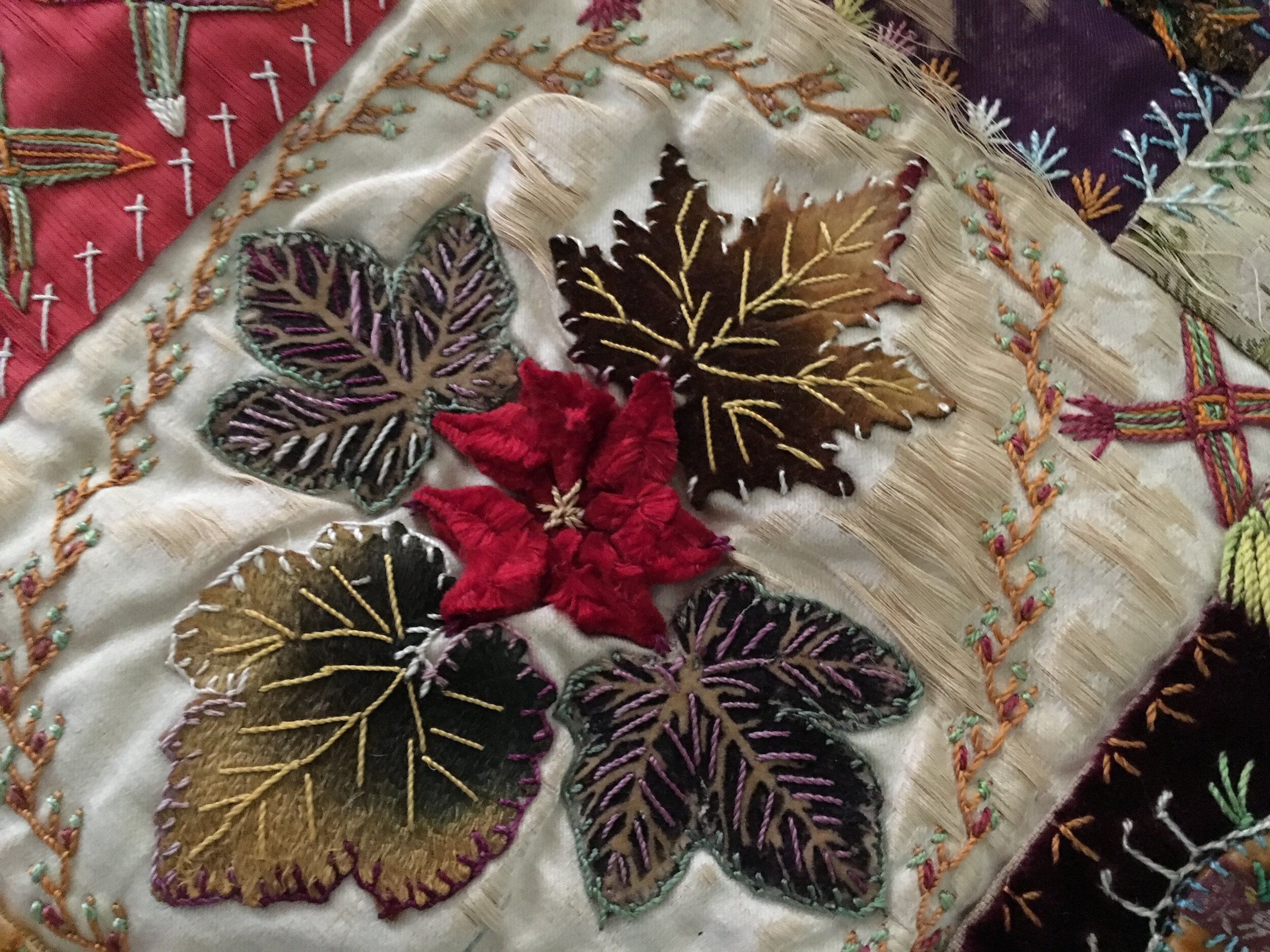Visit This Exhibit
January 6, 2021 – February 7, 2021
Open Wednesday – Sunday
11 AM – 4 PM CST
Accessibility
This exhibit is on the second floor, and is not wheelchair accessible. A Pamphlet is available at the visitor service desk.
Remembered by Hand
Family Histories Illuminated
January 6 - February 7
In a blaze of kaleidoscopic color, the late 1870s saw a fad rush in that took the United States by storm. In a few short years, the crazy quilt was born, reached its zenith, and began a slow descent towards obscurity. But within those years, the crazy quilt was king. Magazines raved and shared tips and patterns for quilting. Companies sold templates for embroidery, appliqués aimed directly at crazy quilters, and even grab bags of crazy quilt fabric.
Most crazy quilts share several characteristics. First, they are not really quilts at all. There is no “quilting,” that is to say, no stitching of a top fabric to a bottom fabric through a layer of batting. Crazy quilts typically had no batting, often were never finished, and where finished had a silk or cotton backing that only loosely connected to the top. Crazy quilts also typically featured silks and velvets, unlike most patchwork quilts, and elaborate embroidery stitching covered seams within blocks as well as between them. Many quilts incorporated lace, appliqués, ribbons, hand-painted fabrics, and even beads and mirrors. They provided women the opportunity to share their needlework skills in a context far more elaborate (dare we say flashy?) than a patchwork quilt or even a sampler.
This exhibit brings together six crazy quilts from the Neill-Cochran House Museum’s permanent collection. All of the quilts share characteristics, most notably an emphasis on velvet and silk fabrics and embroidered seams. However, there are notable differences between the different quilts as well. Some are backed, while others appear unfinished. One quilt incorporates small mirrors, another pipe cleaners, and several are hand-painted. All of the quilts reward close inspection and speak across the 100+ years since their creation to share the stories of their makers.








